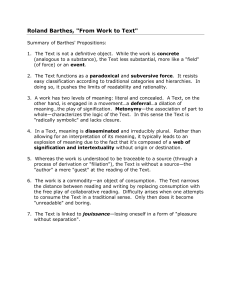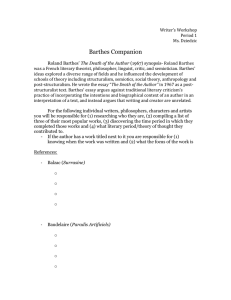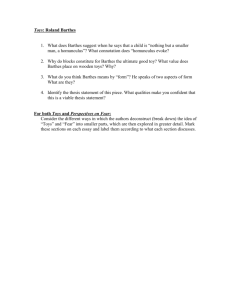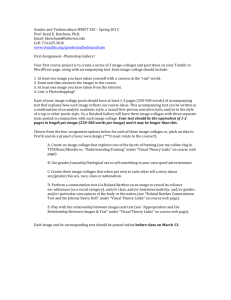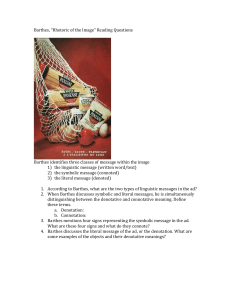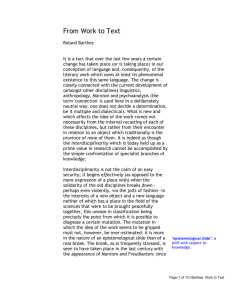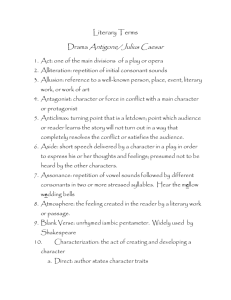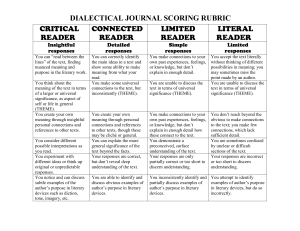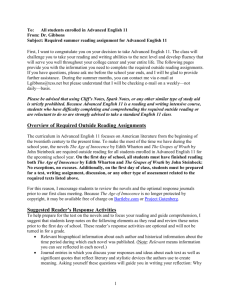10C Barthes "From Work to Text"
advertisement
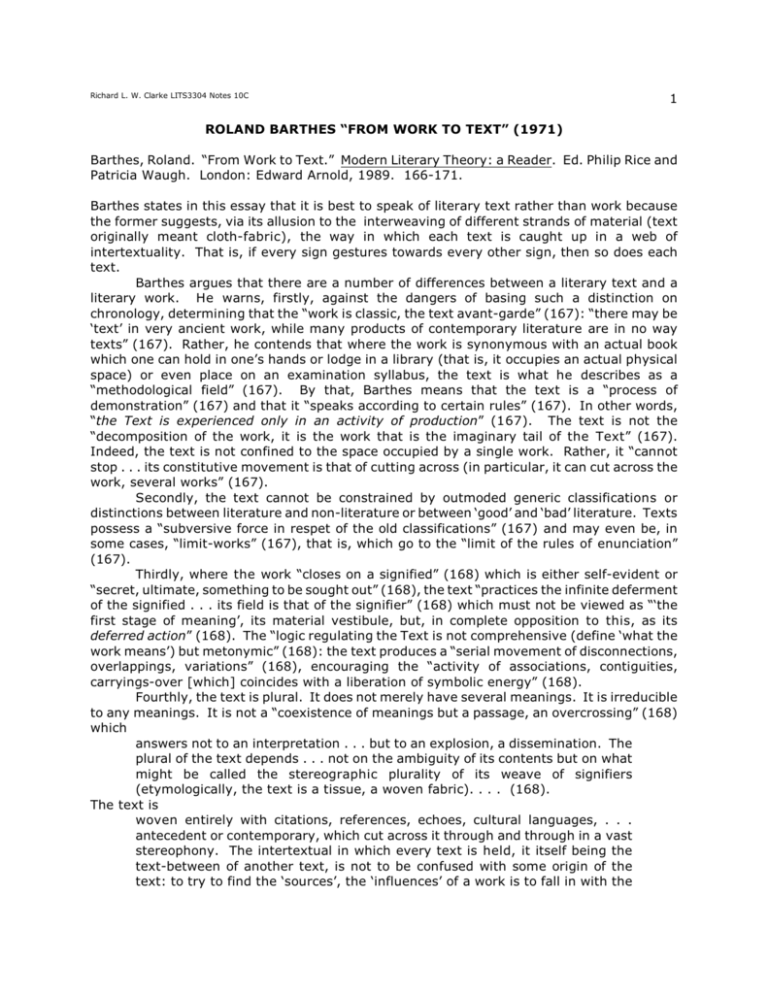
Richard L. W. Clarke LITS3304 Notes 10C 1 ROLAND BARTHES “FROM WORK TO TEXT” (1971) Barthes, Roland. “From Work to Text.” Modern Literary Theory: a Reader. Ed. Philip Rice and Patricia Waugh. London: Edward Arnold, 1989. 166-171. Barthes states in this essay that it is best to speak of literary text rather than work because the former suggests, via its allusion to the interweaving of different strands of material (text originally meant cloth-fabric), the way in which each text is caught up in a web of intertextuality. That is, if every sign gestures towards every other sign, then so does each text. Barthes argues that there are a number of differences between a literary text and a literary work. He warns, firstly, against the dangers of basing such a distinction on chronology, determining that the “work is classic, the text avant-garde” (167): “there may be ‘text’ in very ancient work, while many products of contemporary literature are in no way texts” (167). Rather, he contends that where the work is synonymous with an actual book which one can hold in one’s hands or lodge in a library (that is, it occupies an actual physical space) or even place on an examination syllabus, the text is what he describes as a “methodological field” (167). By that, Barthes means that the text is a “process of demonstration” (167) and that it “speaks according to certain rules” (167). In other words, “the Text is experienced only in an activity of production” (167). The text is not the “decomposition of the work, it is the work that is the imaginary tail of the Text” (167). Indeed, the text is not confined to the space occupied by a single work. Rather, it “cannot stop . . . its constitutive movement is that of cutting across (in particular, it can cut across the work, several works” (167). Secondly, the text cannot be constrained by outmoded generic classifications or distinctions between literature and non-literature or between ‘good’ and ‘bad’ literature. Texts possess a “subversive force in respet of the old classifications” (167) and may even be, in some cases, “limit-works” (167), that is, which go to the “limit of the rules of enunciation” (167). Thirdly, where the work “closes on a signified” (168) which is either self-evident or “secret, ultimate, something to be sought out” (168), the text “practices the infinite deferment of the signified . . . its field is that of the signifier” (168) which must not be viewed as “‘the first stage of meaning’, its material vestibule, but, in complete opposition to this, as its deferred action” (168). The “logic regulating the Text is not comprehensive (define ‘what the work means’) but metonymic” (168): the text produces a “serial movement of disconnections, overlappings, variations” (168), encouraging the “activity of associations, contiguities, carryings-over [which] coincides with a liberation of symbolic energy” (168). Fourthly, the text is plural. It does not merely have several meanings. It is irreducible to any meanings. It is not a “coexistence of meanings but a passage, an overcrossing” (168) which answers not to an interpretation . . . but to an explosion, a dissemination. The plural of the text depends . . . not on the ambiguity of its contents but on what might be called the stereographic plurality of its weave of signifiers (etymologically, the text is a tissue, a woven fabric). . . . (168). The text is woven entirely with citations, references, echoes, cultural languages, . . . antecedent or contemporary, which cut across it through and through in a vast stereophony. The intertextual in which every text is held, it itself being the text-between of another text, is not to be confused with some origin of the text: to try to find the ‘sources’, the ‘influences’ of a work is to fall in with the Richard L. W. Clarke LITS3304 Notes 10C 2 myth of filiation; the citations which go to make up a text are anonymous, untraceable, and yet already read: they are quotations without inverted commas. (169) The reader is confronted with “multiple, irreducible, . . . disconnected, heterogeneous variety of substances and perspectives” (169) which are “half-identifiable” (169) because “they come from codes which are known but their combination is unique”(169). Fifthly, where the work is “caught up in a process of filiation” (169) (it is determined by “the world” [169], by its place within literary history, and by its “conformity” (169) to its author who is “reputed the father and owner of the work” [169], the text is read “without the inscription of the Father” (169). Where the work is thought in terms of an “organism which grows by vital expansion, by ‘development’ (170), the text is something best conceptualised in terms of a “network” (170) and can accordingly be “read without the guarantee of its father” (170). If the Author makes a return to the text, it is “as a ‘guest’” (170): “he is inscribed” (170) like one of his characters, figured in the carpet” (170). His “life is no longer the origin of his fictions but a fiction contributing to his work” (170). Indeed, his work allows his life to be read as a text. This is true even of biography where the very term indicates that “the I which writes the text . . . is never more than a paper-I” (170). Sixthly, where the work is the “object of consumption” (170), the text is “play, activity, production, practice” (170). In the text, the gap between writing and reading is deconstructed by joining writer and reader “into a single signifying practice” (170). The reader is “called upon to be in some sort the co-author of the score, completing it” (171). The text “asks of the reader a practical collaboration” (171) in which s/he is called upon to “produce the text, open it out, set it going.
